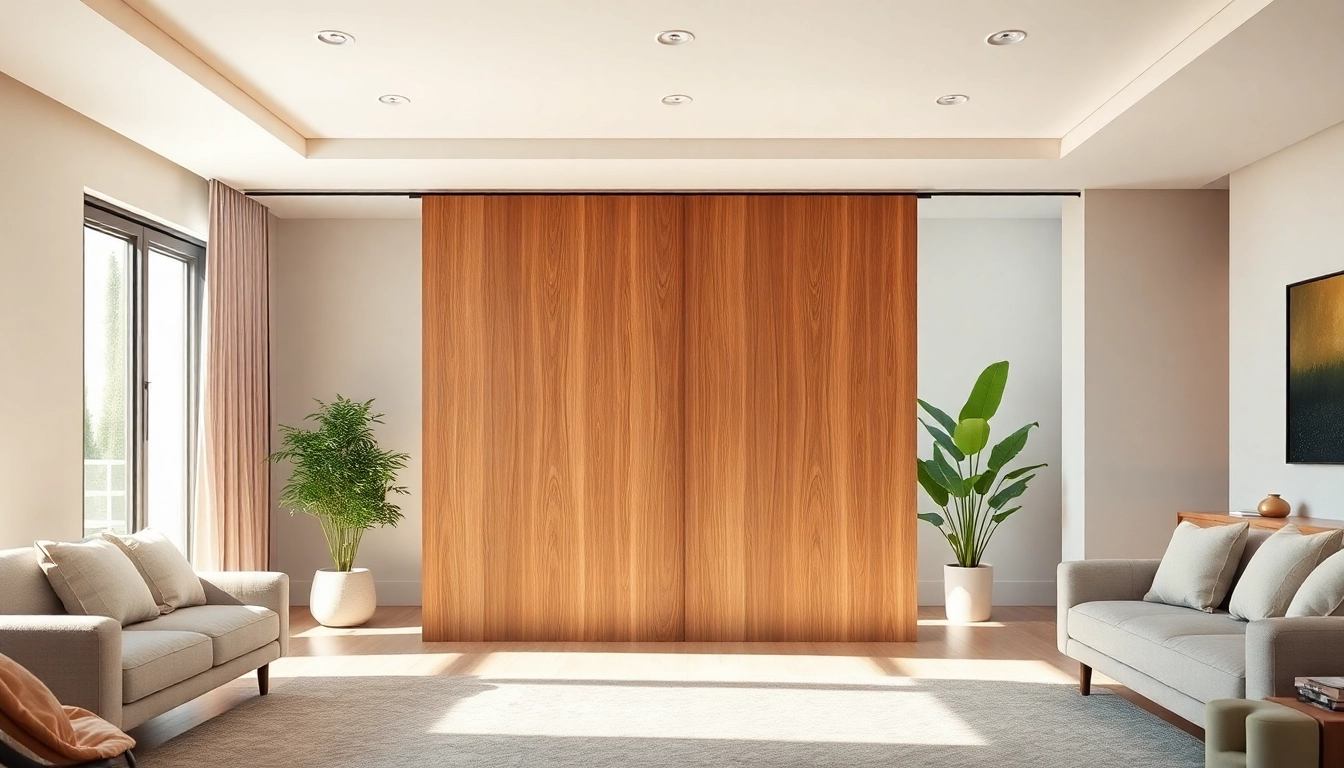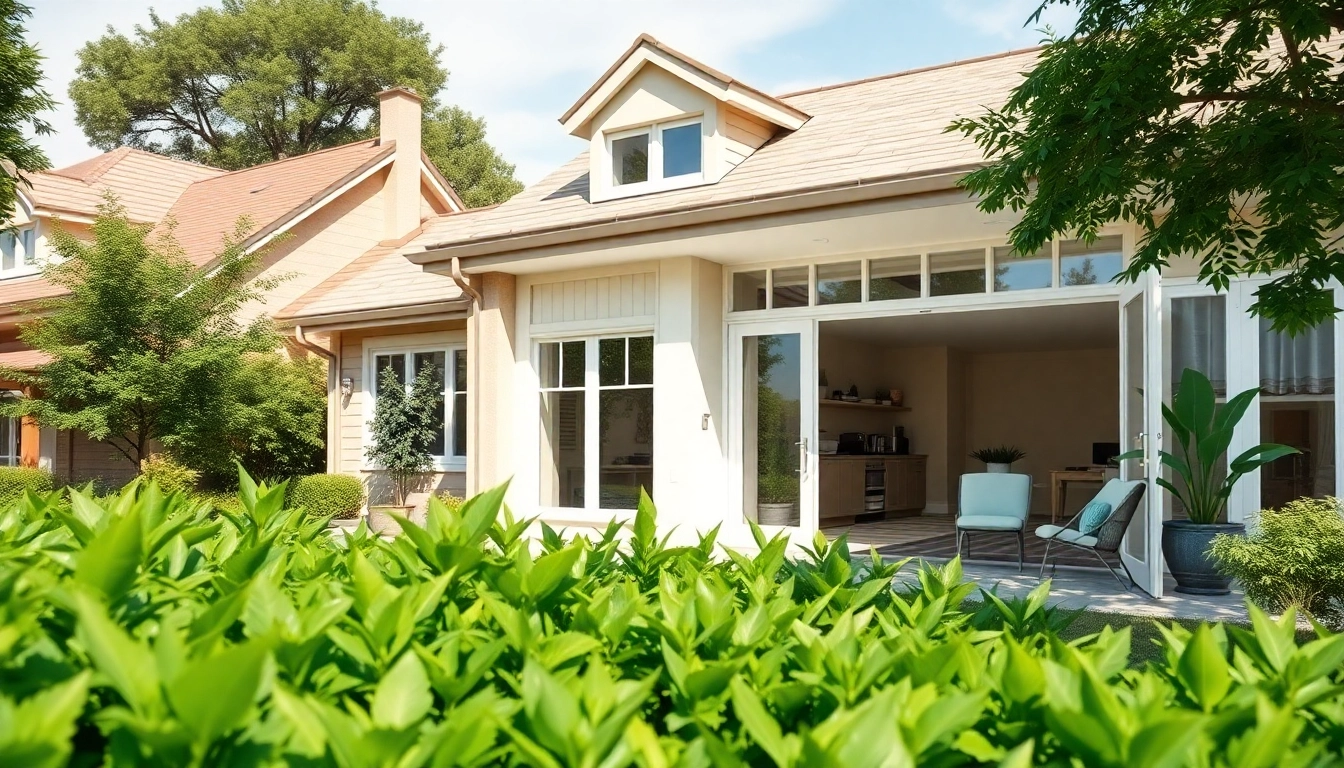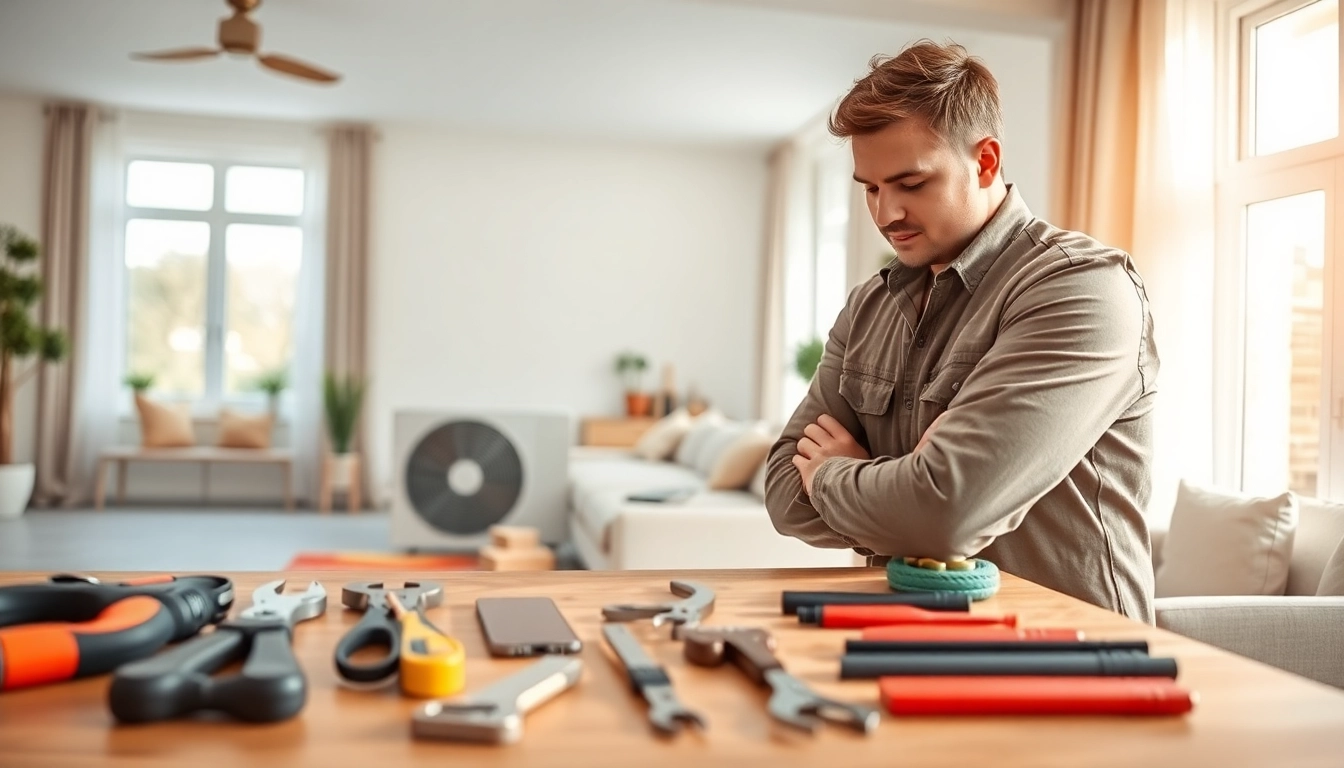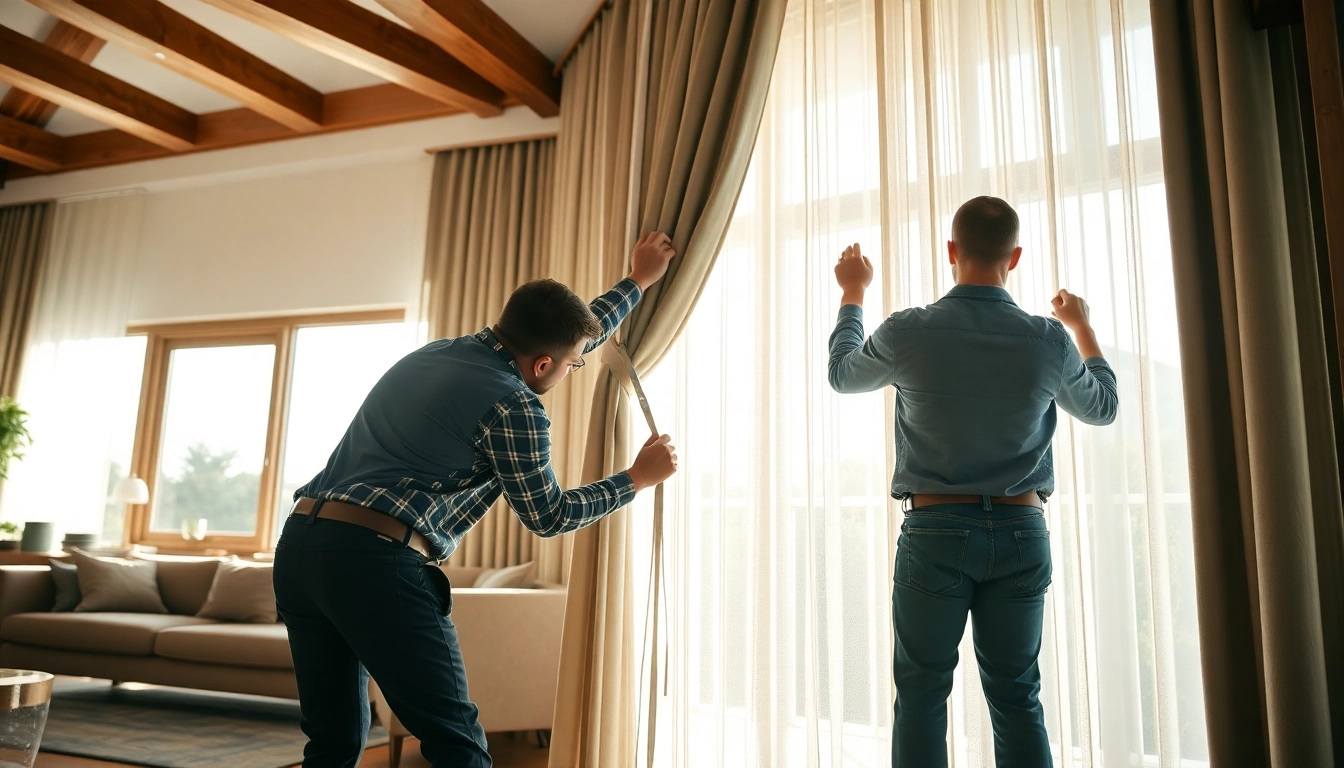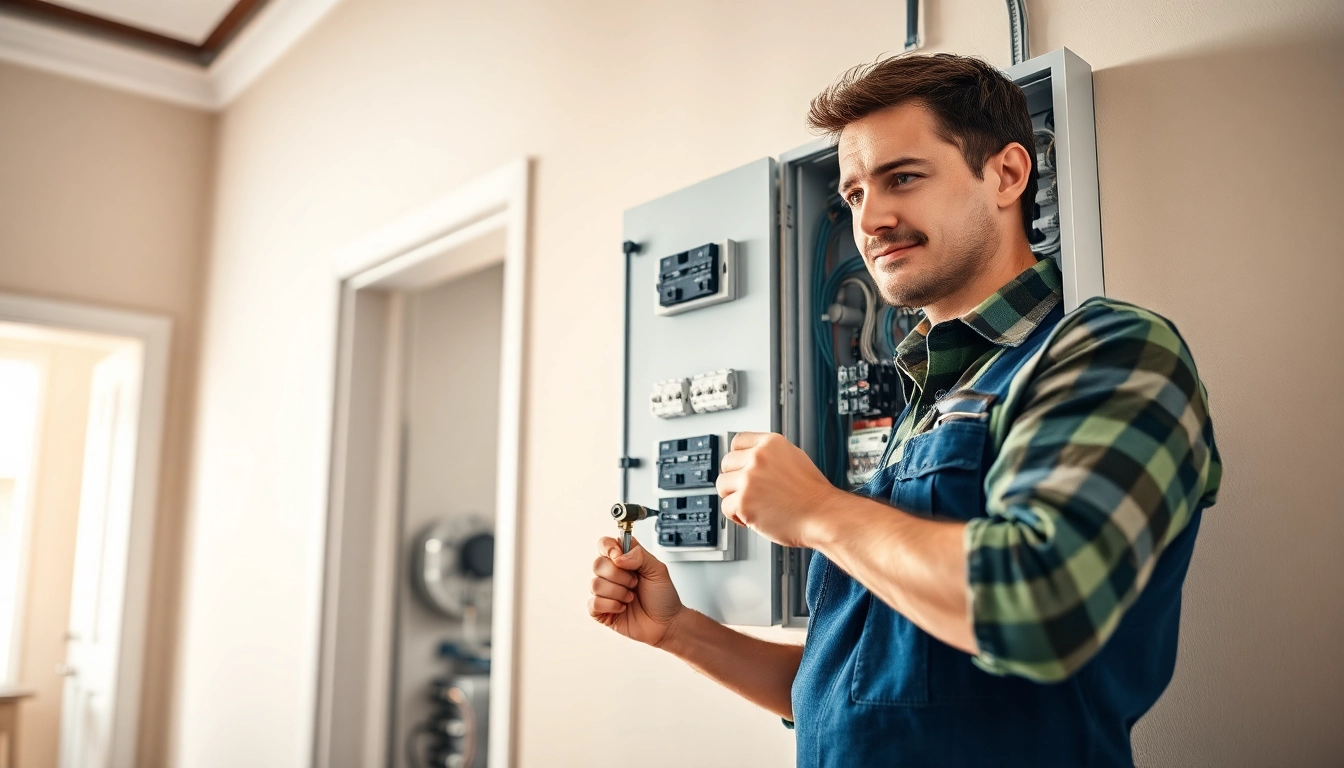Understanding Sliding Partition Walls
Definition and Types of Sliding Partition Walls
Sliding partition walls are flexible structures designed to divide spaces within a room while allowing for easy reconfiguration. They are especially useful in environments where space needs fluctuate, such as offices, homes, studios, and public venues. These partitions can move horizontally along a track system, thereby providing an unobtrusive solution for creating different room layouts.
There are several types of sliding partition walls, including:
- Single-panel Sliding Walls: These consist of one large panel that slides to one side, ideal for creating a spacious feel.
- Multi-panel Sliding Walls: These feature multiple panels that can be adjusted to different configurations, allowing for varying levels of openness and privacy.
- Glass Sliding Walls: Often used in commercial settings, these walls provide a modern aesthetic while allowing light to permeate, making spaces feel larger and more inviting.
- Operable Wall Systems: These complex systems can be deployed in multiple configurations and are excellent for conference rooms or auditoriums, providing acoustical privacy.
Key Benefits of Sliding Partition Walls
Sliding partition walls offer numerous advantages, making them an increasingly popular choice for both residential and commercial spaces:
- Flexibility: They allow users to easily alter the layout of a space according to specific needs, whether for a private meeting or an open social event.
- Space Efficiency: Unlike traditional walls, sliding partitions do not take up extra floor space when moved, maximizing usable area.
- Acoustic Control: Many sliding partitions can provide sound insulation, making them suitable for environments needing privacy.
- Aesthetic Appeal: With a variety of materials and styles available, sliding partition walls can enhance the visual appeal of any space.
- Cost-Effective Solutions: They often represent a more affordable way to reconfigure space without the need for permanent construction.
Ideal Environments for Sliding Partition Walls
Sliding partition walls are ideal for various environments due to their adaptability:
- Commercial Spaces: Offices, conference centers, and showrooms significantly benefit from the flexibility that sliding partitions offer, enabling them to shift between collaborative and private environments.
- Residential Homes: In homes, these walls can define spaces, such as separating a living area from a home office without the permanence of a traditional wall.
- Educational Institutions: Classrooms and multipurpose halls can maximize their functionality, allowing for group activities or different teaching configurations.
- Cafés and Restaurants: The ability to quickly adjust seating arrangements to cater to different patron needs enhances customer satisfaction and operational efficiency.
Design Considerations for Sliding Partition Walls
Materials and Aesthetics
When selecting sliding partition walls, the choice of materials significantly affects aesthetics and functionality. Common material options include:
- Wood: Offers warmth and a classic look, suitable for residential and rustic-themed spaces.
- Glass: Provides a sleek, modern aesthetic and promotes natural light; ideal for commercial environments.
- Metal: A durable option often chosen for industrial or contemporary settings.
- Composite Materials: These are engineered for specific characteristics such as resilience and sound proofing.
It’s essential to align the material choice with the overall design theme of the space, considering factors such as lighting, color palettes, and existing architecture.
Choosing the Right Size and Style
Proper sizing is crucial for functionality. Customers must consider the dimensions of the space and how much partitioning is required. Custom solutions are often available, allowing for:
- Height and Width: Standard sizes are available, but bespoke options provide the chance to optimize for specific dimensions.
- Style Matching: Whether opting for a minimalist design or a more ornate finish, matching styles with other room elements ensures coherence.
With so many styles available—ranging from sliding barn doors to sleek, modern panels—users can select a design that resonates with their personal style while serving practical purposes.
Integration with Existing Architecture
For sliding partition walls to be effective, they must integrate seamlessly with existing structures. This includes:
- Architectural Features: Consider how architectural elements such as windows, doorways, and fixtures affect installation and design choices.
- Functionality Considerations: Ensure that the positioning of sliding walls does not interfere with walkways, entrances, or other functional aspects of the space.
- Color Coordination: Match or complement existing color schemes to create continuity.
Collaboration with design professionals can facilitate this process, ensuring that the finished product not only functions well but enhances the space’s overall aesthetic.
Installation and Maintenance
Step-by-Step Installation Guide
The installation of sliding partition walls can vary by style and material, but a general approach includes the following steps:
- Assess the Space: Measure the area where the partition will be installed, taking care to account for ceiling height and floor level.
- Select Components: Gather necessary materials, including the wall panels, tracks, rollers, and any hardware specific to the type of sliding wall chosen.
- Installation of Tracks: Fix the upper track to the ceiling securely. Ensure it’s level and adequately supported.
- Hang the Panels: Attach the panels to the rollers and position them on the track.
- Secure Lower Guides: Depending on the system, install lower guides to ensure stability and to prevent movement in the wrong direction.
- Final Adjustments: Adjust the panels for smooth movement and check that they align correctly when closed.
It’s recommended to follow manufacturer instructions for specific systems, as there may be unique requirements based on the design chosen.
Maintenance Tips for Longevity
To ensure the longevity and optimal functionality of sliding partition walls, regular maintenance is essential. Here are some tips:
- Regular Cleaning: Dust and clean the panels and tracks regularly to prevent dirt accumulation that could hinder movement.
- Inspect Hardware: Periodically check all screws, tracks, and rollers for wear and tighten where necessary.
- Lubricate Tracks: Use appropriate lubricants on the tracks to ensure smooth operation and reduce noise.
- Monitor Damage: Make ongoing assessments for any damage or wooden warping, especially in humid environments.
- Professional Service: Consider hiring professionals for periodic maintenance checks or to address any potential issues before they escalate.
Common Challenges and Solutions
While installing and using sliding partition walls, several challenges may arise:
- Alignment Issues: If partitions are not aligned correctly, they may not function well. Solution: Regularly inspect and adjust alignment as necessary.
- Space Restrictions: In smaller rooms, there may not be enough space for sliding actions. Solution: Consider different styles, such as bi-folds or pocket doors, that can accommodate tighter areas.
- Acoustic Concerns: If sound transmission is an issue, opt for specialized materials designed for acoustical management. Solution: Use solid or insulated panels for improved sound efficiency.
Comparing Sliding Partition Walls with Other Room Dividers
Sliding vs. Folding Partition Walls
Sliding and folding partition walls both serve the purpose of dividing spaces; however, they function differently:
- Space Utilization: Sliding walls, such as sliding partition walls, do not take up floor space when opened, while folding walls need space to collapse, making them less efficient in tighter rooms.
- Operational Ease: Sliding partitions typically require less physical effort to operate compared to folding partitions, making them preferable in settings where space must be adjusted frequently.
Cost Comparison: Sliding Partition Walls and Alternatives
Cost is always a consideration when choosing room dividers. Sliding partition walls generally have a higher initial investment due to their complexity and the materials used compared to traditional barriers. However, their benefits often outweigh these costs through:
- Reduced construction costs because they do not require floor space for installation.
- Lower costs over time due to flexibility, enabling a single space to serve multiple functions, thereby enhancing operational efficiency.
When considering overall value, it’s important to factor in long-term usage, possible energy savings, and aesthetic enhancements that an investment in quality sliding walls can provide.
Space Efficiency: Maximizing Your Space
Ultimately, the goal of any dividing wall is to maximize usable space effectively. Sliding partition walls shine in environments where function is consistently evolving. Spaces can be easily transformed from small intimate settings to large open areas, all without the impact of heavy construction
Notably, with the right design and planning, sliding partitions can help create environments which are not only functional but visually interesting, keeping users and occupants engaged and inspired.
Trends and Innovations in Sliding Partition Walls
Smart Technology Integration
In recent years, the integration of smart technologies into interior design has gained traction. Rising ideas around smart sliding partition walls include:
- Automated Systems: Remote-controlled sliding walls enhance convenience and quick adjustments. Users can change layouts through simple button presses.
- Integrated Lighting: Some systems are being designed with built-in ambient lighting, enhancing aesthetic qualities while also increasing functionality during events.
Sustainable Material Trends
With the growing awareness of environmental sustainability, there’s been a noticeable increase in demand for sustainable materials in constructing sliding walls. Options include:
- Reclaimed Wood: Offer a unique look while promoting recycling.
- Eco-friendly Composites: Such materials are engineered to reduce environmental impact while maintaining durability.
- Recyclable Materials: Increasingly, manufacturers are developing systems from materials that can be recycled at end of life.
Future of Interior Design: Analyzing Upcoming Trends
The future holds exciting changes for sliding partition walls. We can expect to see:
- Customization: More personalized designs will cater specifically to user needs and space requirements.
- Enhanced Acoustic Solutions: As remote work continues to influence design needs, there will be a greater emphasis on materials that help with sound insulation.
- Expanded Use Cases: Sliding partitions will be increasingly applied in unconventional spaces such as outdoor areas, facilitating seamless indoor-outdoor transitions.
